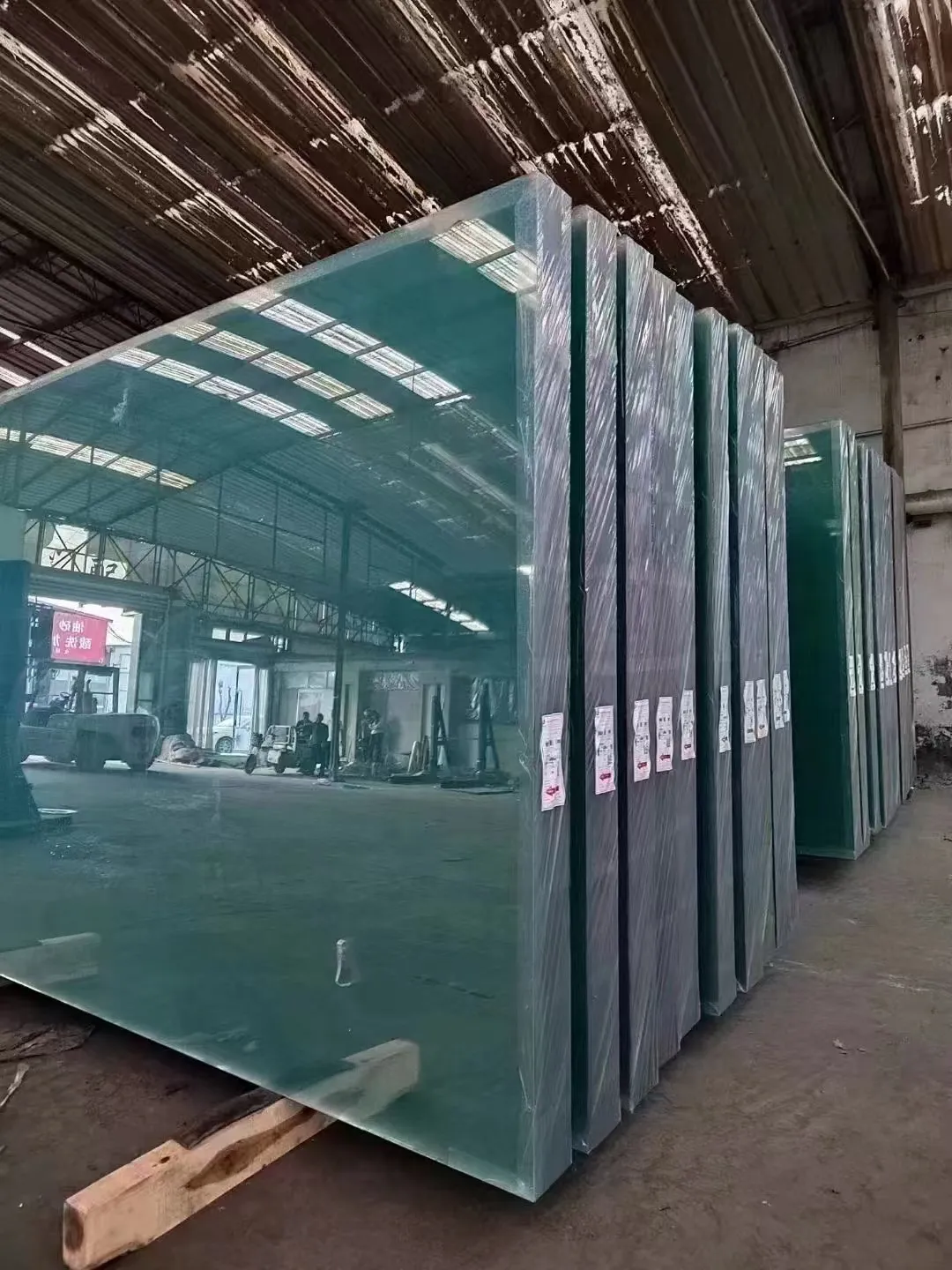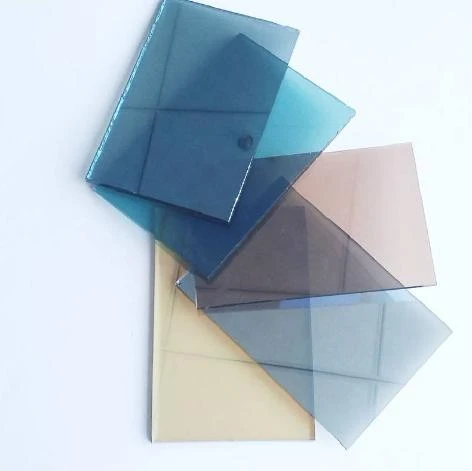Architectural glass has transformed the skyline and interior spaces of cities worldwide, providing not just aesthetic appeal but also enhancing functionality and sustainability. The advancement in glass technology has catapulted its use into cutting-edge architectural applications. This article sets out to explore the unparalleled benefits, innovative applications, and the nuanced considerations that govern the selection of architectural glass.

The multifaceted nature of architectural glass lies at the core of its extensive adoption. Not merely a transparent barrier, architectural glass acts as a medium that can filter light, control temperature, and even generate energy. This versatility makes it an indispensable component in modern architecture. For instance, electrochromic glass, which adjusts its tint in response to sunlight, has redefined energy efficiency in buildings by reducing the reliance on artificial lighting and air-conditioning. Leading architects consistently integrate such innovations to not only meet contemporary design standards but to anticipate future needs.
Experts in the field frequently emphasize the importance of selecting the right type of glass to achieve the desired balance between aesthetics and functionality. Low-E coatings, for example, are paramount when energy efficiency is a priority. These coatings limit heat transfer, maintaining comfort without compromising on natural illumination. Security is another critical consideration; laminated or tempered glass variants provide enhanced safety and durability, making them ideal for high-traffic or high-risk areas.

In designing with glass, one also has to consider the acoustic properties it offers. Buildings situated in noisy urban environments often employ specialized acoustic glass to mitigate sound pollution, creating serene indoor settings. This aspect of sound control not only improves quality of life but also enhances productivity in workspaces, showcasing glass’s potential to contribute positively to human health and well-being.
Architects and designers are now increasingly viewing glass as an active element rather than a passive one. Photovoltaic glass, embedded with solar cells, represents a leap towards integrating renewable energy into building envelopes. As buildings account for a significant portion of global energy consumption, using photovoltaic glass contributes towards offsetting this impact, aligning with broader environmental goals.
architectural glass pdf
The authoritative voice in architectural glass is often backed by compliance with industry standards and certifications, ensuring performance and safety. Certifications such as LEED (Leadership in Energy and Environmental Design) further solidify trust in glass products by affirming their contribution to sustainable building practices.
Real-world applications of architectural glass extend beyond commercial skyscrapers to residential homes. Glass facades can create the illusion of space, bringing the outside in and allowing residents to enjoy panoramic views while maintaining privacy. The application of smart glass in residential settings exemplifies a convergence of luxury and practicality, providing homeowners with adaptive solutions to light and privacy management without sacrificing style.
The credibility of architectural glass solutions is often validated through real-life case studies and testimonials from architects who have successfully implemented these technologies. Learning from such experiences can provide valuable insights into overcoming challenges related to installation and long-term maintenance—cornerstones in ensuring the longevity of glass installations.
The future of architectural glass promises even more dynamic and interactive designs as materials and technologies continue to evolve. As urban areas strive to become more sustainable and responsive to the needs of their citizens, architectural glass will undoubtedly play a pivotal role in shaping the buildings of tomorrow. Professionals in the field must stay abreast of innovations and leverage their expertise to harness the full potential of glass, ensuring buildings that are not only aesthetically pleasing but also attuned to the ecosystem around them.
Conclusively,
architectural glass is not just a component but a canvas for modern architects. As new tools and technologies emerge, this material invites creativity and sustainable practices, standing as a testament to human ingenuity and the pursuit of innovative design.
 Afrikaans
Afrikaans  Albanian
Albanian  Amharic
Amharic  Arabic
Arabic  Armenian
Armenian  Azerbaijani
Azerbaijani  Basque
Basque  Belarusian
Belarusian  Bengali
Bengali  Bosnian
Bosnian  Bulgarian
Bulgarian  Catalan
Catalan  Cebuano
Cebuano  Corsican
Corsican  Croatian
Croatian  Czech
Czech  Danish
Danish  Dutch
Dutch  English
English  Esperanto
Esperanto  Estonian
Estonian  Finnish
Finnish  French
French  Frisian
Frisian  Galician
Galician  Georgian
Georgian  German
German  Greek
Greek  Gujarati
Gujarati  Haitian Creole
Haitian Creole  hausa
hausa  hawaiian
hawaiian  Hebrew
Hebrew  Hindi
Hindi  Miao
Miao  Hungarian
Hungarian  Icelandic
Icelandic  igbo
igbo  Indonesian
Indonesian  irish
irish  Italian
Italian  Japanese
Japanese  Javanese
Javanese  Kannada
Kannada  kazakh
kazakh  Khmer
Khmer  Rwandese
Rwandese  Korean
Korean  Kurdish
Kurdish  Kyrgyz
Kyrgyz  Lao
Lao  Latin
Latin  Latvian
Latvian  Lithuanian
Lithuanian  Luxembourgish
Luxembourgish  Macedonian
Macedonian  Malgashi
Malgashi  Malay
Malay  Malayalam
Malayalam  Maltese
Maltese  Maori
Maori  Marathi
Marathi  Mongolian
Mongolian  Myanmar
Myanmar  Nepali
Nepali  Norwegian
Norwegian  Norwegian
Norwegian  Occitan
Occitan  Pashto
Pashto  Persian
Persian  Polish
Polish  Portuguese
Portuguese  Punjabi
Punjabi  Romanian
Romanian  Russian
Russian  Samoan
Samoan  Scottish Gaelic
Scottish Gaelic  Serbian
Serbian  Sesotho
Sesotho  Shona
Shona  Sindhi
Sindhi  Sinhala
Sinhala  Slovak
Slovak  Slovenian
Slovenian  Somali
Somali  Spanish
Spanish  Sundanese
Sundanese  Swahili
Swahili  Swedish
Swedish  Tagalog
Tagalog  Tajik
Tajik  Tamil
Tamil  Tatar
Tatar  Telugu
Telugu  Thai
Thai  Turkish
Turkish  Turkmen
Turkmen  Ukrainian
Ukrainian  Urdu
Urdu  Uighur
Uighur  Uzbek
Uzbek  Vietnamese
Vietnamese  Welsh
Welsh  Bantu
Bantu  Yiddish
Yiddish  Yoruba
Yoruba  Zulu
Zulu 


